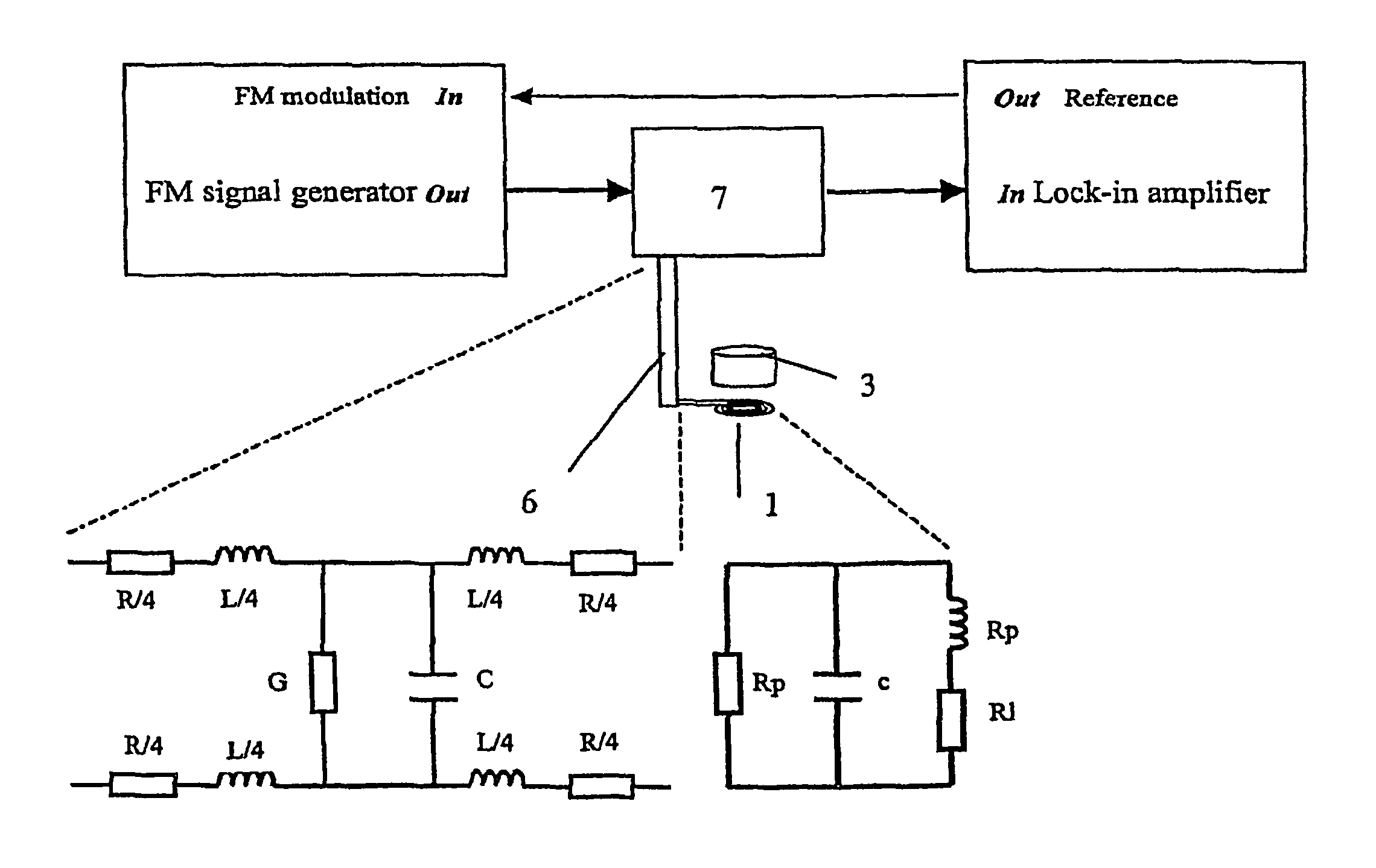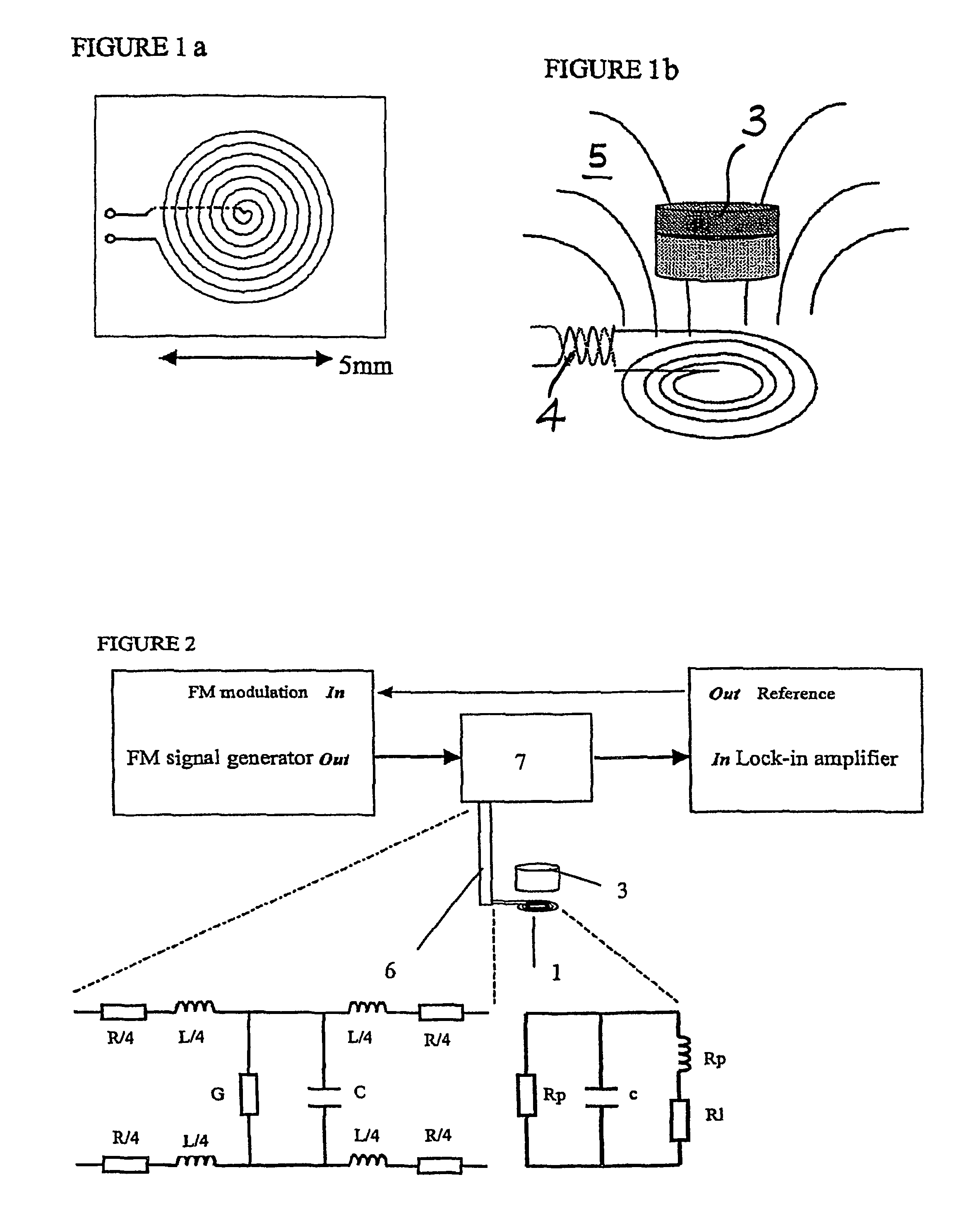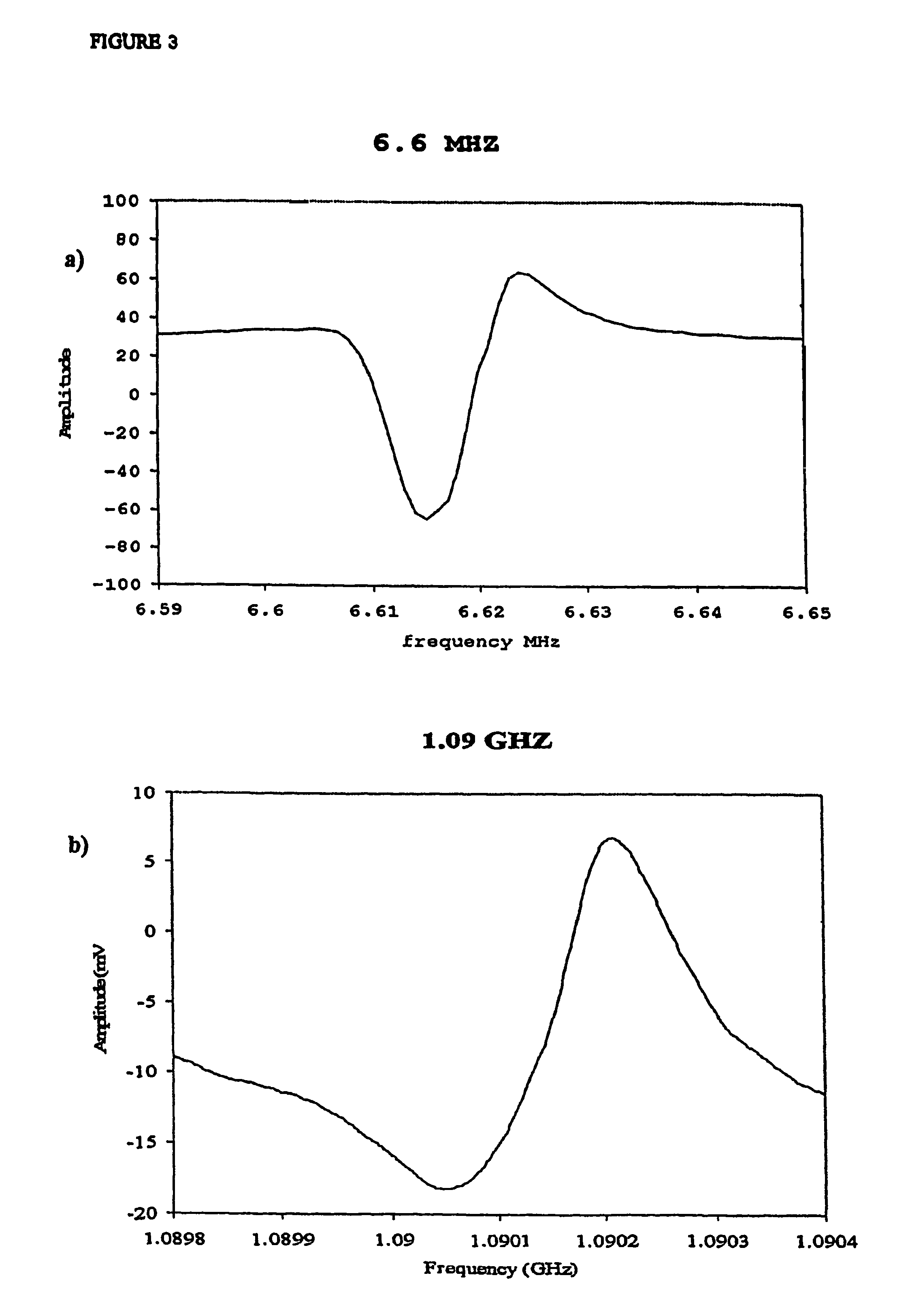Electromagnetic piezoelectric acoustic sensor
a piezoelectric acoustic sensor and piezoelectric technology, applied in the direction of mechanical audible signalling, solid analysis using sonic/ultrasonic/infrasonic waves, magnetic measurement, etc., can solve the problem of reducing sensitivity and interpretation complications, wave penetration still overshoots interfacial chemistry with loss of sensitivity, and provides a sufficiently compact evanescent zone to fully recover biochemical signals
- Summary
- Abstract
- Description
- Claims
- Application Information
AI Technical Summary
Problems solved by technology
Method used
Image
Examples
Embodiment Construction
[0031]FIG. 1b and FIG. 2 show an example arrangement in a sensor according to the present invention. A coil 1 receives RF current 4 via a multiply resonant transmission line 6. The electromagnetic field 5 produced by the coil 1 drives a piezoelectric element 3 to produce acoustic waves by electrostriction. The sensing done by the acoustic waves occurs either directly or indirectly. The substance to be detected either adsorbs to the vibrating surface, or a receptor can be attached to the vibrating surface, which is specific to the substance to be detected. When the substance adsorbs, it changes the acoustic spectrum. The coil 1 also acts as a detector which converts the changed electromagnetic field caused by the changed acoustic waves back into a RF current which is detected by a detection circuit, which includes an AM-diode detector 7 in this example.
[0032]The present invention eliminates the need for fine tuning between the transmission line 6 and the coil 1 in order to generate t...
PUM
| Property | Measurement | Unit |
|---|---|---|
| harmonic frequencies | aaaaa | aaaaa |
| frequency | aaaaa | aaaaa |
| electromagnetic field | aaaaa | aaaaa |
Abstract
Description
Claims
Application Information
 Login to View More
Login to View More - R&D
- Intellectual Property
- Life Sciences
- Materials
- Tech Scout
- Unparalleled Data Quality
- Higher Quality Content
- 60% Fewer Hallucinations
Browse by: Latest US Patents, China's latest patents, Technical Efficacy Thesaurus, Application Domain, Technology Topic, Popular Technical Reports.
© 2025 PatSnap. All rights reserved.Legal|Privacy policy|Modern Slavery Act Transparency Statement|Sitemap|About US| Contact US: help@patsnap.com



